During my time as a Reynolds Journalism Institute Student Innovation Fellow at the Star Tribune, our CEO tasked the intern class with answering this question: “How might the Star Tribune reach college-age students who are interested in the news, and convert them into loyal readers?”
Our intern class created a proposal presented to senior company leadership to create better strategies for building trust with this audience, which we called “Emerging News Consumers.” We sought to encourage this group to purchase digital subscriptions and retaining them during and after their college career.
Throughout the four weeks we worked on the proposal, we used design thinking to understand the needs of this demographic and where the Star Tribune was not currently meeting their needs.
Conducting audience research
Before we could begin pitching our solutions to attract more emerging news consumers to the Star Tribune, we needed to better understand the audiences we were targeting. We decided to focus on news consumers who graduated high school and went to college in Minnesota, a significant audience. Almost 70% of high school graduates in Minnesota stay in the state for college as of 2021. That trend continues at the college level. Over 60% of University of Minnesota alumni live in the state after graduation.
To understand the needs of these audiences, we looked into external research on Gen-Z audiences, a similar demographic to our own target audience, and crafted our own informal survey of 53 college students. While this survey did include students outside of Minnesota due to time constraints, we felt it was important to hear opinions from this age demographic to inform our recommendations.
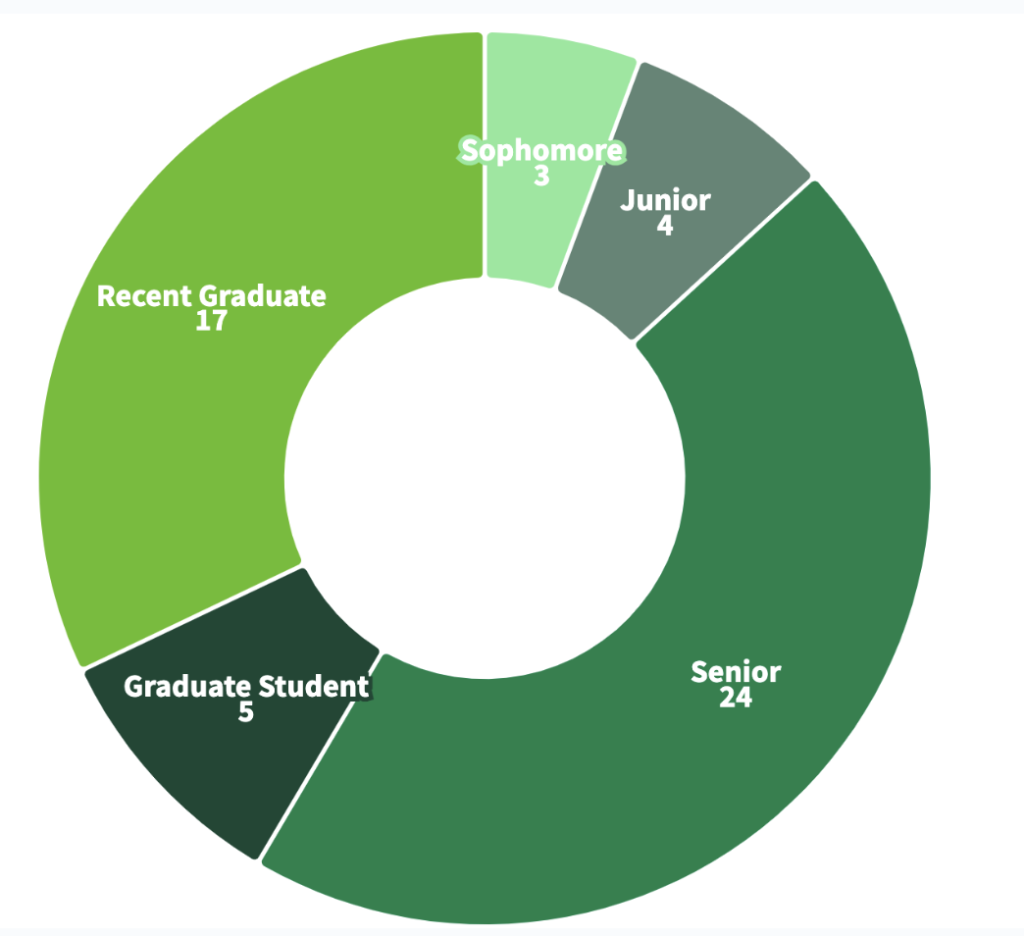
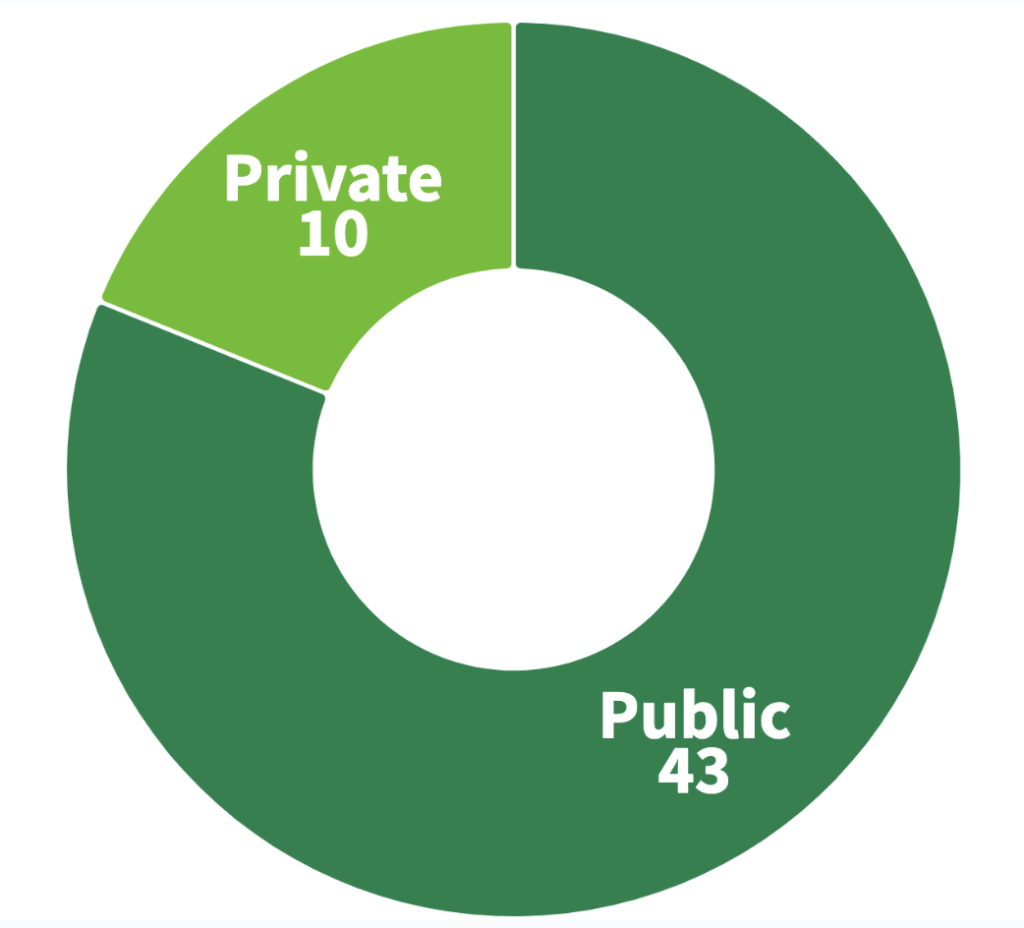

Through this research, we found that many emerging news consumers are willing to pay for news in certain cases. A report from the American Press Institute targeting Gen-Z and Millenials showed many do pay for news, especially those using digital storytelling formats like newsletters and video or personalized media outlets like influencers.
Our own survey also showed similar results. Our survey respondents said they saw value in paying for local news, but lacked the budget to do so while in college. This group lacked funds to pay for multiple subscriptions while in school and was much more likely to pay for local news once they graduated and started their first job.
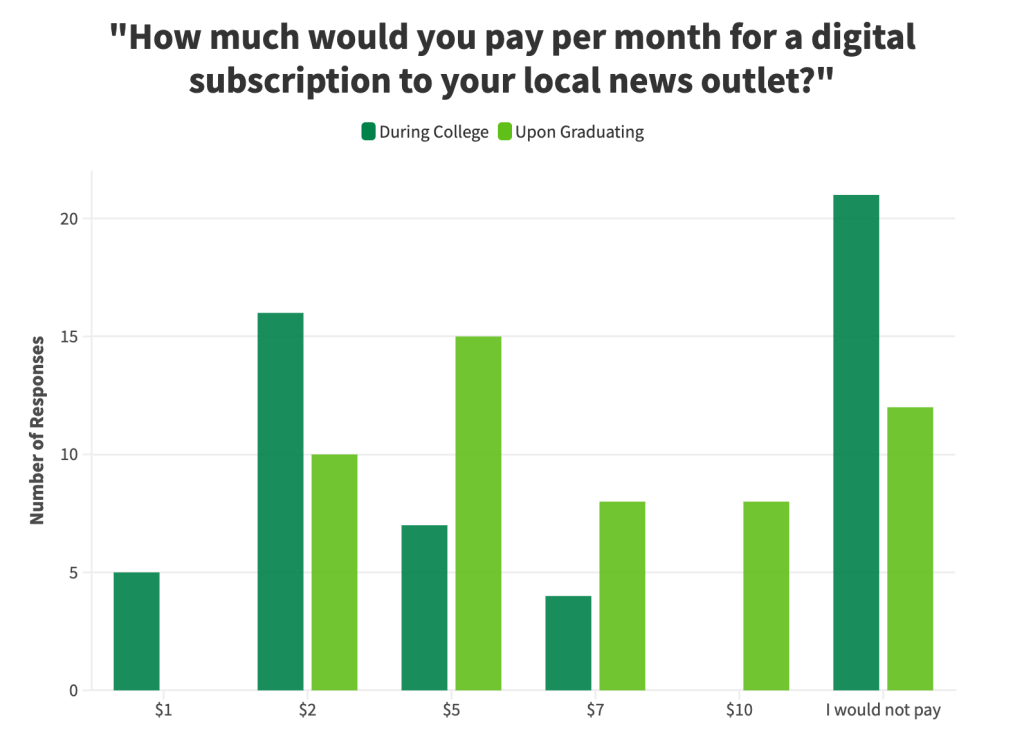

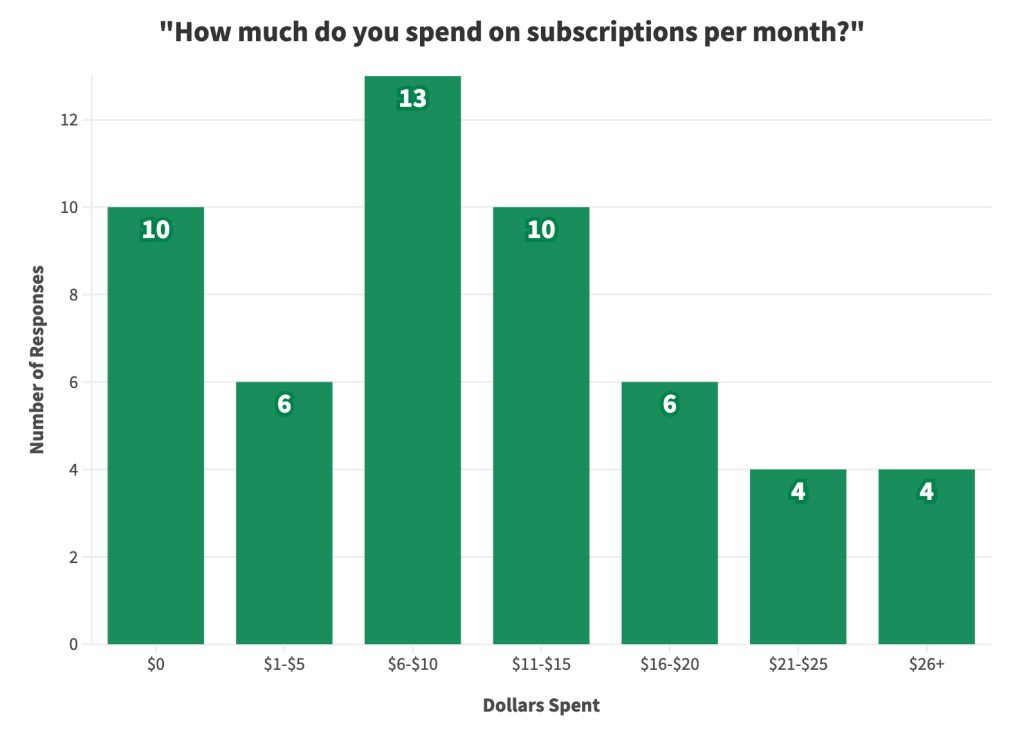
Through this research, we concluded three values that mattered to emerging news consumers when paying for news that guided our presentation.
- Gen Z is more interested in individual creators than institutions.
- Gen Z does not feel represented in local news.
- Gen Z is willing to pay for news, but needs to see value before investing.
Setting OKRs and organizing teams
Since the project ran on a tight deadline, we wanted to quickly define what success looked like in our proposal. We created three OKRs centered around acquisition of younger audience members, retainment of their subscriptions and improving trust with this demographic.
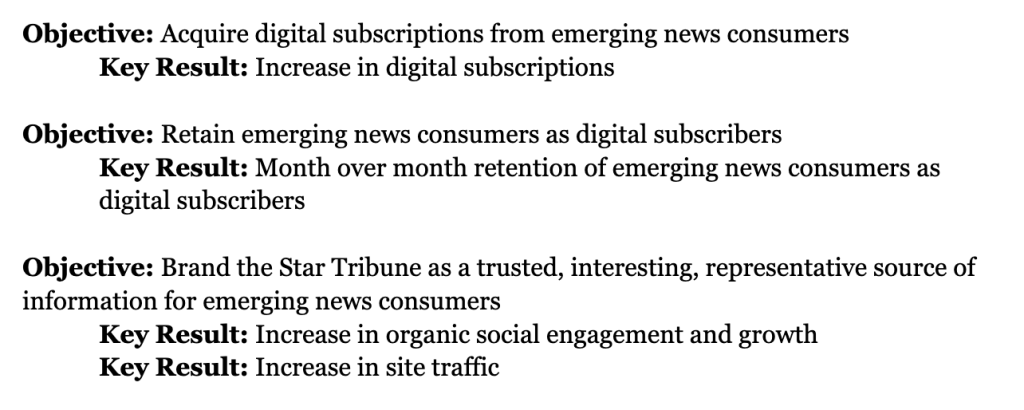
This allowed us to organize our class of interns into distinct groups centered around these goals.
Creating access points for emerging news consumers
I led the team of four focused on our first OKR, to acquire more digital subscriptions and create more access points for emerging news consumers. Through our research, we determined this audience could not afford to pay for the Star Tribune at its current price point of $129/year. Because our target audience had few resources to spend on subscriptions, we needed to create affordable, if not free, ways to access the Star Tribune’s content.
The Star Tribune already offered free access for K-12 students through its News in Education program. It also gave Minnesota high school graduates a free one-year subscription. We recommended two programs to continue to give these students access into their college years.
First, we recommended the Star Tribune sell subscription packages to higher education institutions in Minnesota. These subscription packages would be paid for by the University and offer free access to students and staff. Other news organizations, like the Wall Street Journal, already offer similar programs.
Next, for students who attended universities that did not purchase a subscription package, we recommended offering a discounted subscription rate for students and young professionals. College students were defined as anyone with a .edu email address, while young professionals were described as those within two years of college graduation. These discounted rates would be an affordable way to introduce emerging news consumers to Star Tribune content and build habit with those audiences.
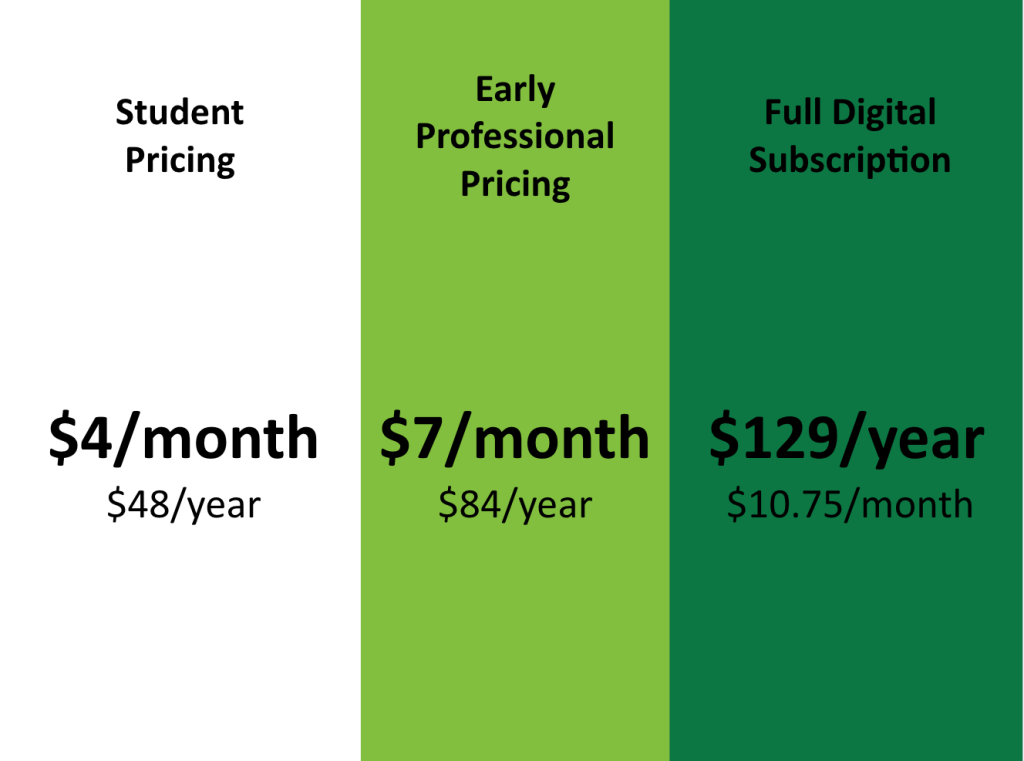
Presentations and next steps
These proposals were given as a slide deck to senior leadership and outlined in a 29-page document that was distributed to many teams within the Star Tribune, including the newsroom.
In the next iteration of the project, we recommended researching infrastructure requirements to create new subscription prices, as well as more detailed research into Minnesota emerging news consumers.